15 Most Beautiful Places in the Peloponnese, Greece | Hidden Gems in Greece
If you’re looking for hidden gems in Greece, the Peloponnese might just be the country’s best-kept secret.
I spent just over a week exploring the stunning Peloponnese region, and as I ventured further down the Mani peninsula – into what locals call the Deep Mani – I barely saw another living soul, let alone any other tourists!
In this post, I’m going to share some of the most beautiful places in the Peloponnese, which are some of the most unique places to visit in Greece.
So, if you want to get off the beaten track in Greece, keep on reading!
15 Most Beautiful Places in the Peloponnese | Hidden Gems in Greece
The Peloponnese region at a glance
The Peloponnese is a peninsula located in southern Greece, renowned for its rich history, stunning landscapes, and delicious cuisine.
Steeped in ancient mythology and home to tonnes of significant archaeological sites, the Peloponnese region is where you’ll find the ancient city of Olympia, (the birthplace of the Olympic Games) as well as the ancient cities of Sparta, Corinth, and the ruins of Mycenae, a once-great civilisation of the Bronze Age.
The Peloponnese region is also home to some of the most unique geography in Greece, with pristine white sand beaches sharing space with rugged cliffs, subterranean caves, ancient trails, and, of course, scores of olive groves.
During my visit, I travelled from the vibrant coastal city of Kalamata to the isolated mountain villages of the Deep Mani (including a village that has been almost totally abandoned), encountering some of the most beautiful landscapes I’ve ever seen.
If you want to get off the beaten track in Greece, this is the place for you.
Is the Peloponnese worth visiting?
While Greeks know the Peloponnese to be one of the best places to visit in Greece, this enigmatic region remains largely undiscovered by international tourists.
Here are some reasons to visit the Peloponnese:
- Affordable – food, wine, and accommodation are all super affordable in the Peloponnese, so if you’re visiting Greece on a budget, the Peloponnese region is a great choice.
- Not touristy – the Peloponnese region is one of the last few hidden gems in mainland Greece, where you can go days without seeing another tourist. This means unspoilt landscapes and authentic Greek culture.
- Steeped in history – Sparta, Olympia, and Corinth are just some of the ancient cities in the Peloponnese, so if you’re interested in ancient ruins, history, and Greek mythology, you’ll find plenty of interesting things to see in the Peloponnese
- Peloponnese beaches – white sands, craggy rocks, smooth pebbles and azure waters await you on some of the most beautiful beaches in Greece.
- Unspoilt nature – if you’re a nature enthusiast or an adventure traveller, you’ll want to take advantage of the ample hiking, climbing, and cycling opportunities here. Wild nature and stunning vistas abound in the Peloponnese.
- Cuisine – fresh seafood, world famous olives, slow-cooked meats and all the best traditional Greek dishes can be found here, at a much better quality than you’ll find in popular tourist resorts.
- There are lots of beautiful villas and hotels to take your pick from along the Mani. You can find the perfect vacation rentals in Greece with cozycozy to suit your budget.
15 Most Beautiful Places in the Peloponnese
1. The Mani
One of the most beautiful places to visit in the Peloponnese is undoubtedly the Mani Peninsula, the most rugged and isolated part of the region.
The Mani Peninsula has a long and tumultuous history that has seen it largely estranged from mainland Greece. As a result, Maniots are known for their independent spirit, warrior traditions, and strong sense of honour – or, as our tour guide put it, ‘they’re not very nice.’
The Mani Peninsula is characterised by its dramatic landscape of towering mountains, rocky cliffs, and fortified tower houses, or ‘Maniot towers,’ which were constructed as defensive structure during times of conflict.
Its rugged terrain makes it ideal for nature lovers and adventure travellers, with an infinite number of hiking trails and rock climbing opportunities.
The Mani is also famous for its coastline, dotted with picturesque hamlets, hidden coves, and unspoilt beaches, which are true Greek hidden gems.
The best way to explore the Mani Peninsula is by car, stopping off in scenic villages and coastal towns, the best of which I’ve included in this post!
2. Limeni
Limeni is a small coastal village located on the Mani Peninsula, and it’s undoubtedly one of the best places to visit in the Peloponnese.
Limeni has it all – natural beauty, rich history, and authentic Greek charm by the bucketload.
The village is characterised by its traditional tower houses, fishing boats bobbing in the harbour, and azure waters. Although there is no real Limeni beach, there are some steps leading into the water if you fancy a swim.
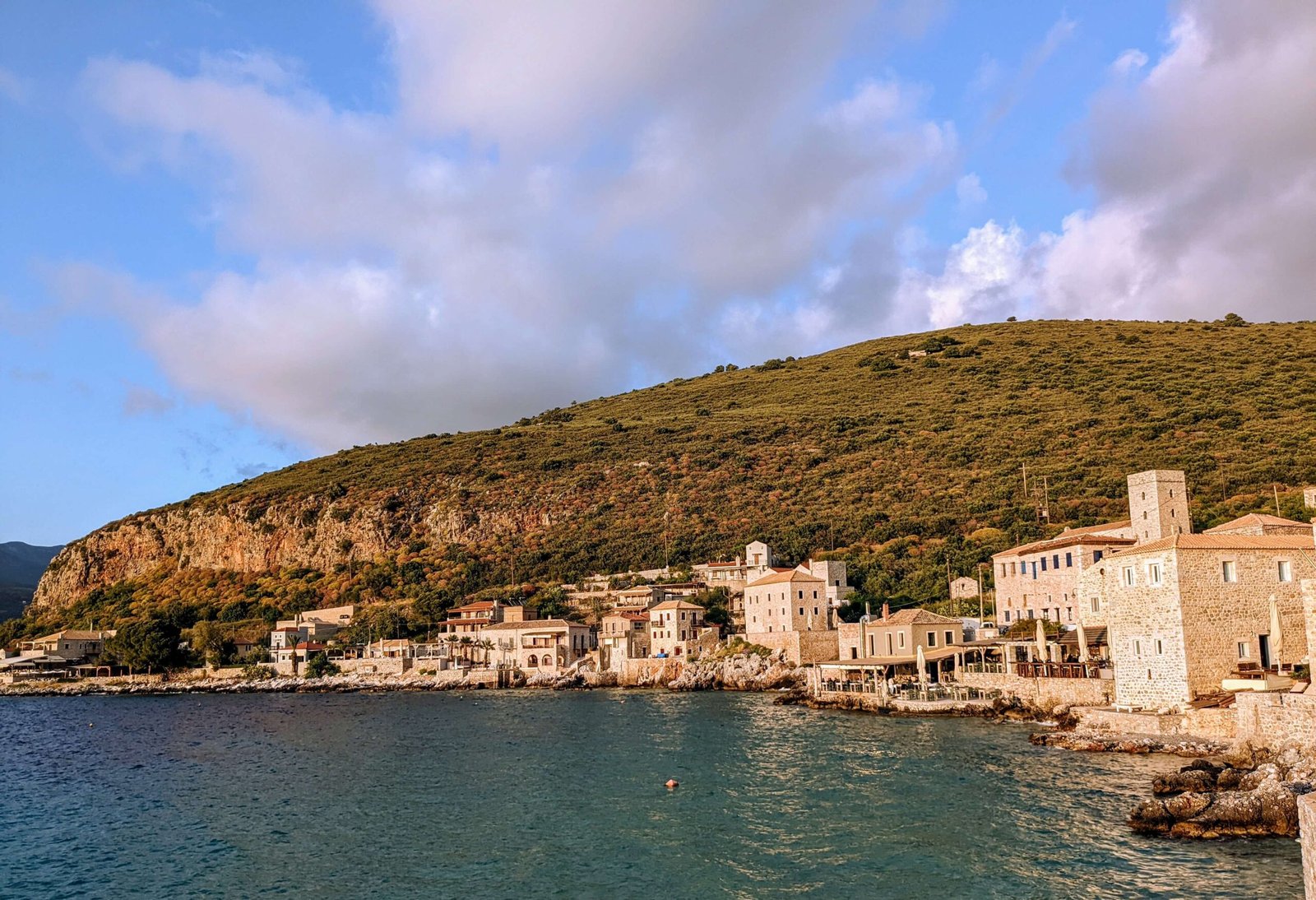
There aren’t many things to do in Limeni, but that’s the beauty of it.
We took a leisurely stroll around the village, stopping at Thodora’s Place for a glass of wine and a gorgeous sunset view, before going to dinner at Kourmas, where we were presented the biggest plate of prawn linguine I’ve ever seen (alongside tonnes more seafood traditional Greek dishes).

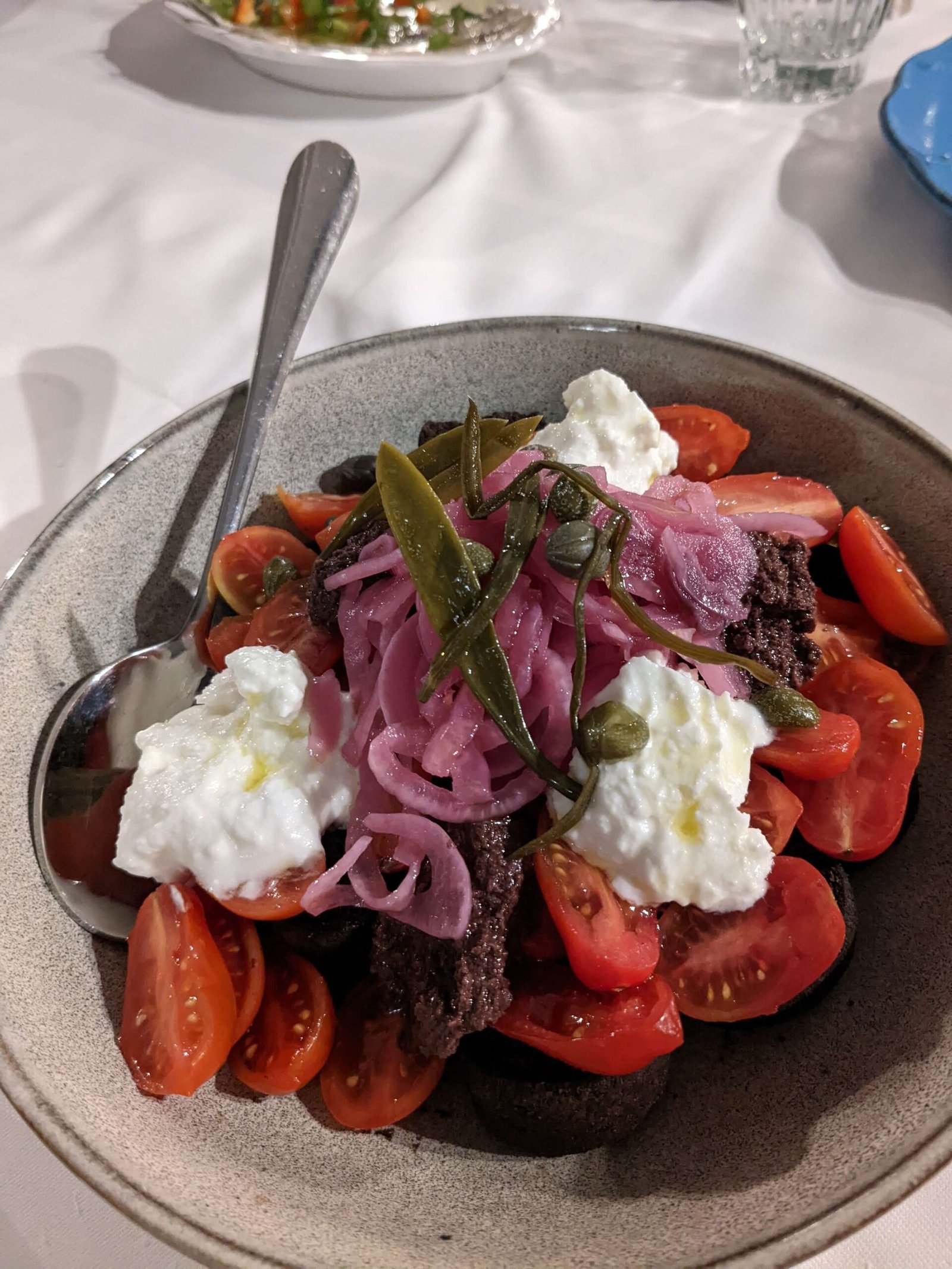
Where to stay in Limeni
Limeni makes a great base for exploring the Mani, as well as being an ideal spot to unwind for a day or two and disconnect from everything.
As far as hotels in Limeni go, Kourmas is the restaurant and beach club that we went to, and it is absolutely stunning. If the rooms are anything as good as the food, you’ll be very comfortable here.
Alternatively, there’s a very bougie boutique hotel in Limeni named Pirgos Mavromichali, with luxury rooms and views to match.

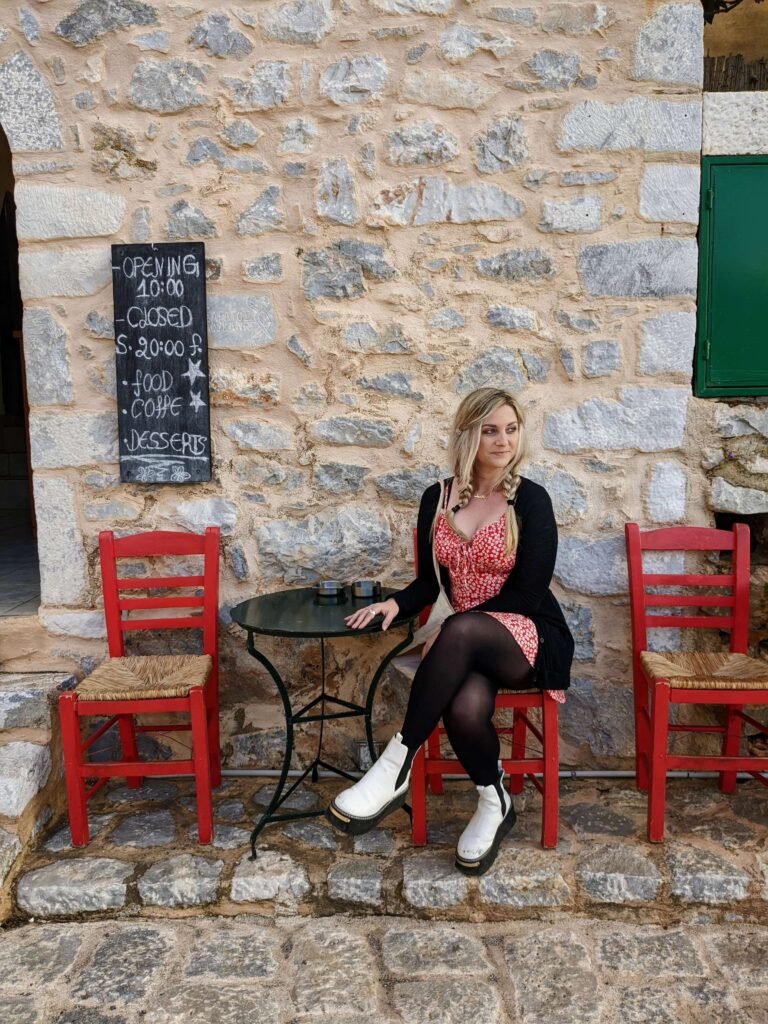
R: Being an Instagram princess
3. Areopoli
Just a few minutes’ drive away from Limeni is the city of Areopoli, which is actually where the Greek War of Independence started against the Ottomans in the 1800s (I did promise you history!).
The old part of town is charming, with traditional stone houses, towers, and colourful flowers, and with only 1000 inhabitants, it’s the perfect place to disconnect from the outside world.
There are lots of coffee shops and artisan stores selling locally-made souvenirs, as well as plenty of lovely restaurants to choose from.
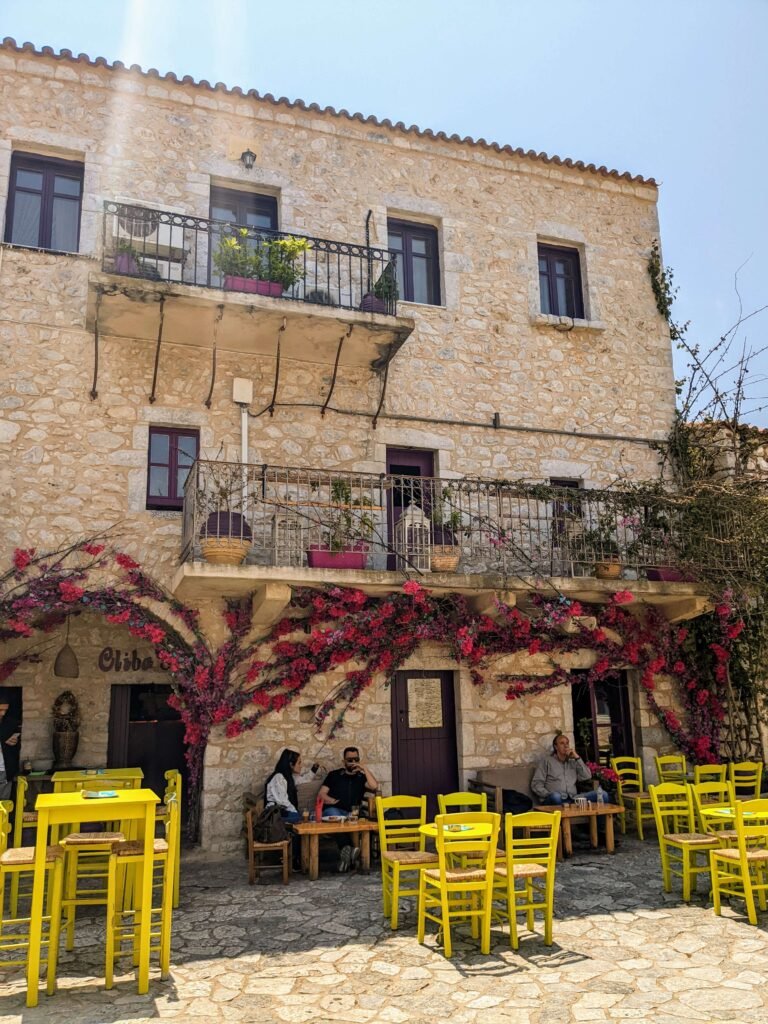

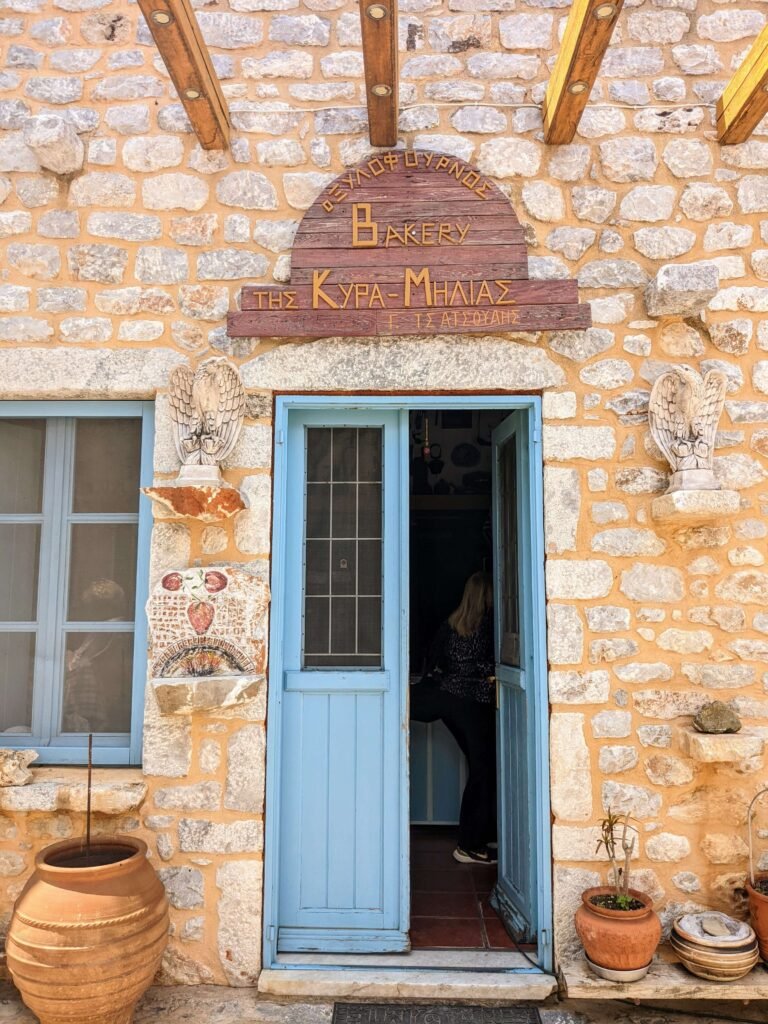

Where to stay in Areopoli
I stayed at Kastro Maini, a traditional stone house in the heart of Areopoli with a hydromassage pool, cosy rooms, and a great breakfast. I’d definitely stay here again.
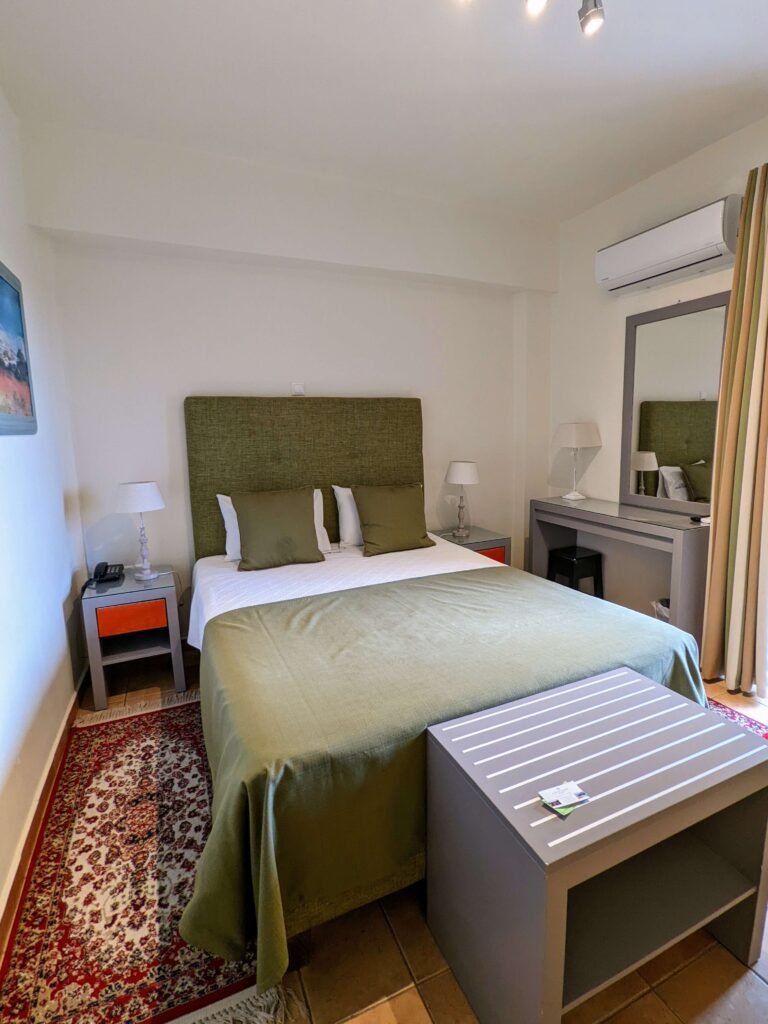
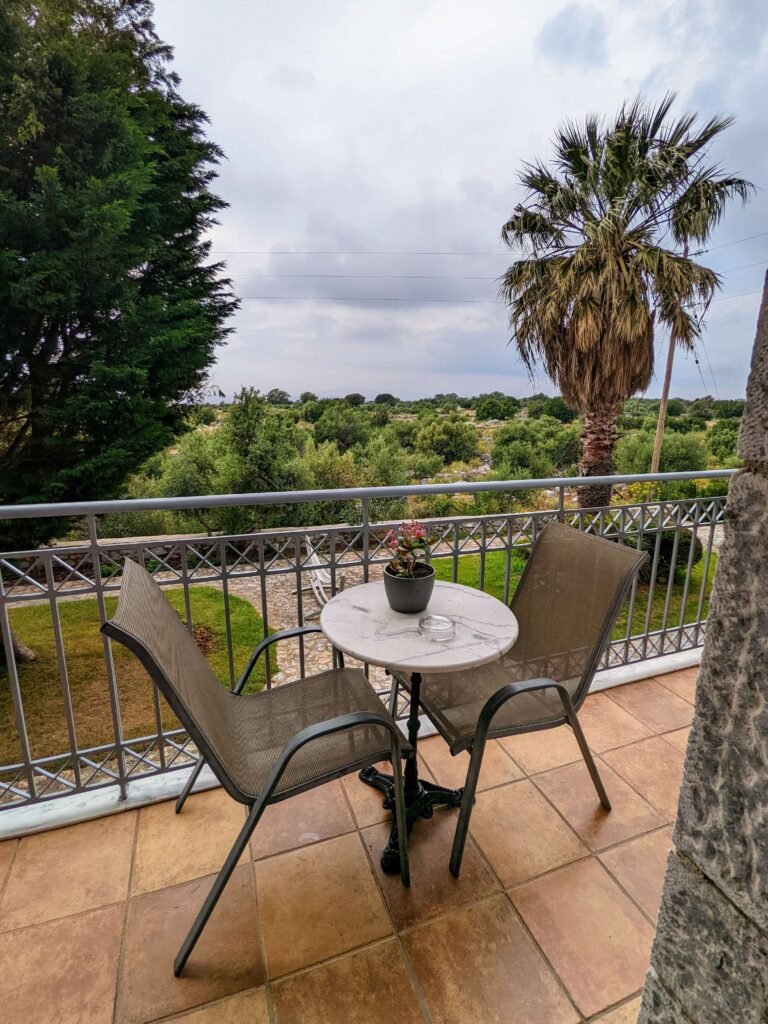
4. Diros Caves
About 10km from Areopoli are Diros Caves, a sprawling underground world which extends 15km into the rockface.
You can enjoy a tour of Diros Caves on a wooden boat which glides slowly through narrow tunnels and eerie chambers, allowing you to get within touching distance of the stalagmites and stalactites, as well as passing by a Neolithic burial site.
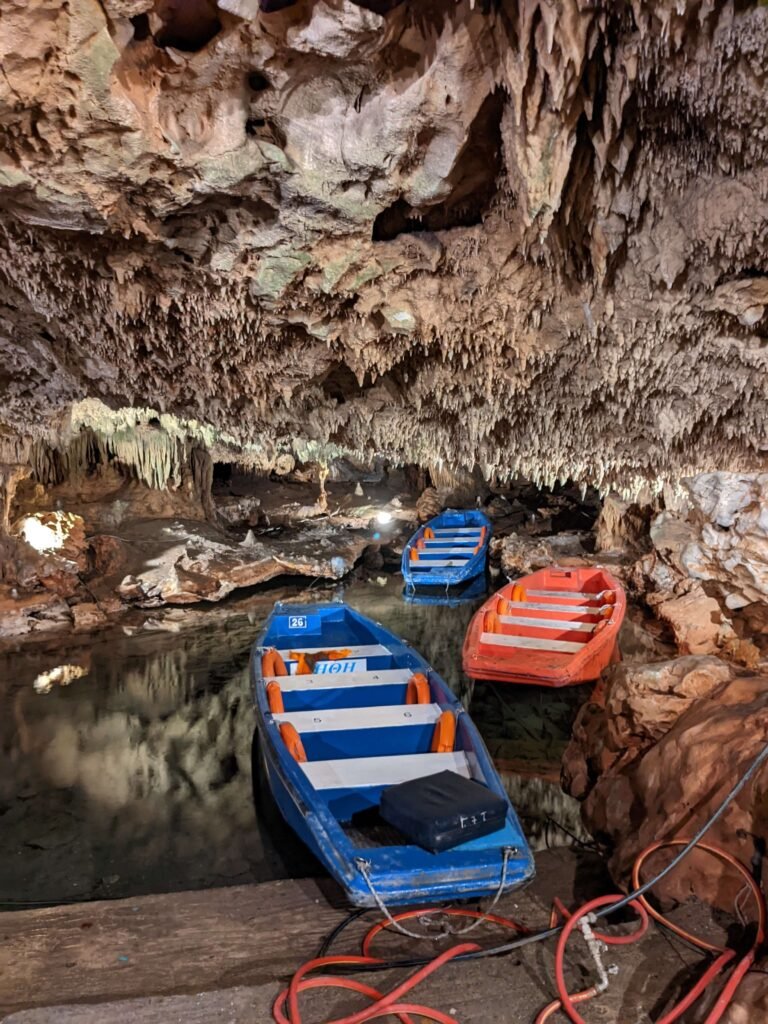

The boat trip takes less than half an hour, and as Diros Caves are one of the best things to see in the Peloponnese, they’re well worth a visit.
Tickets for the boat trip are 12 EUR, but if you want a land tour of the caves to be included, you can pay 17 EUR and enjoy both.
Here is the price list for the various Diros Caves tours.
5. Ancient Messene
Imagine the Acropolis without the crowds, and you have Ancient Messene.
Ancient Messene is a set of ruins of an entire city, and they are more extensive than both Olympia and Old Corinth.
Here, you can walk around the old columns, tombs, and fortifications, and sit in the amphitheatre completely undisturbed, before heading back up the hill to the archaeological museum.
Before you leave, don’t forget to take in the incredible views of Ancient Messene from above.
I recommend going for lunch at Ithomi Restaurant which not only serves excellent food, but the views over Ancient Messene from here are incredible – plus, the lovely manager got me some superglue for my broken shoe, so they get extra points in my book!
Ancient Messene is best explored as part of a day trip from Kalamata.


6. Kapsia Caves
The Kapsia Caves, near the village of Kapsia (funnily enough), have a long history dating back to the Neolithic period and have served as a refuge, a place of worship, and a burial site throughout the ages.
Discovered in 1887, the Kapsia Caves have only been open to tourists since 2010, and are known for their impressive stalactite and stalagmite formations that adorn the various chambers.
A particularly sobering part of the caves is in one of the last chambers, where human bones can be seen. This is from a tragic flood inside the caves – the people living inside climbed up as high as they could to escape the water, but unfortunately succumbed, and their remains can still be seen in the place where they perished.
The Kapsia Caves are an awe-inspiring destination for nature lovers, history enthusiasts, and anyone seeking a unique experience in the heart of the Peloponnese.
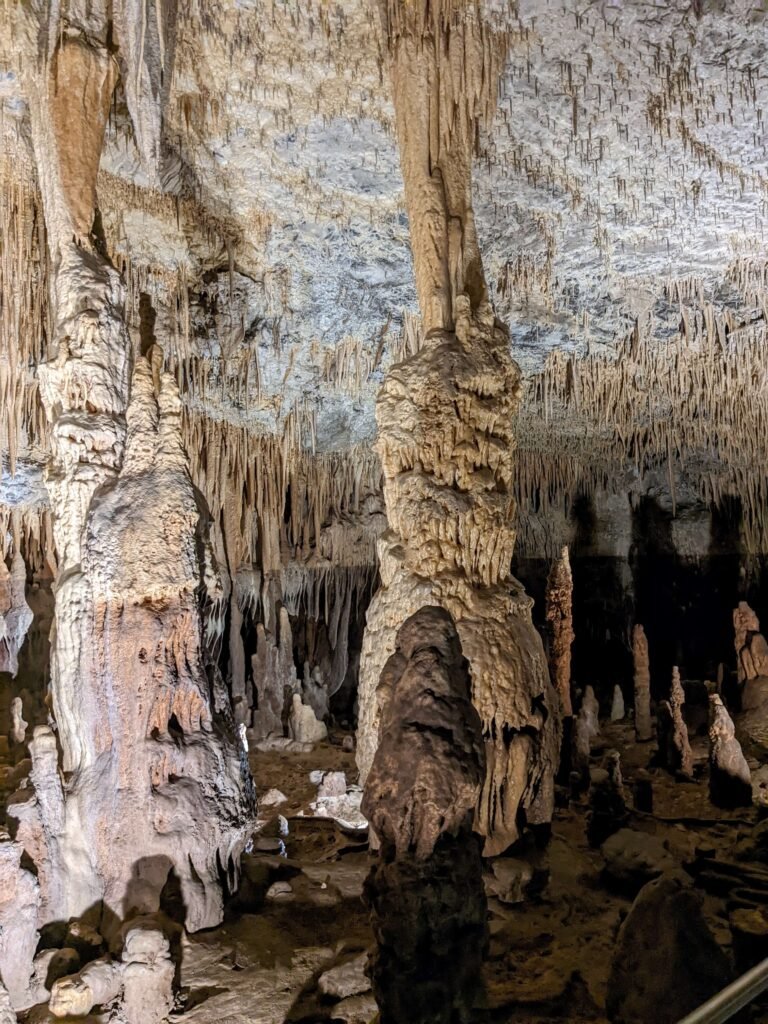
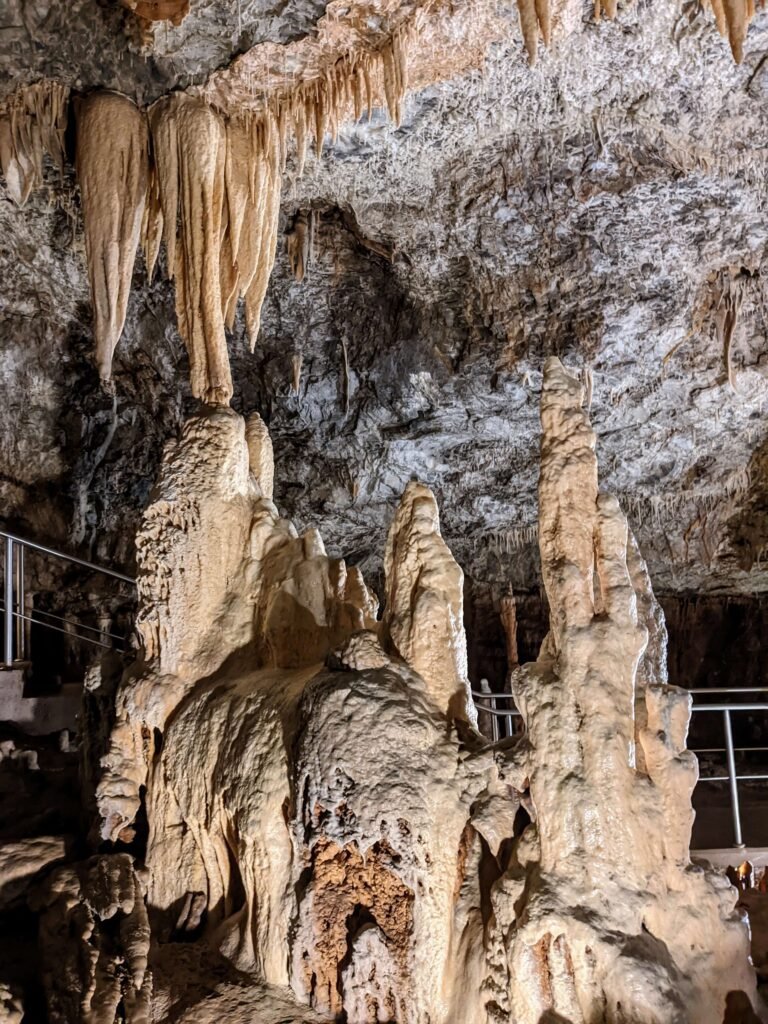
7. Vytina
A stone’s throw away from the Kapsia Caves is Vytina, a charming mountain village nestled in the heart of the Peloponnese.
Surrounded by lush forests and formidable mountains, Vytina, is renowned for its natural beauty, traditional stone houses, and warm hospitality.
In the village, you can find quaint shops selling local produce such as homemade jams, fresh pasta, herbs, and wheels of goat cheese, as well as cosy tavernas (I recommend Kokkina Pitharia), and traditional guesthouses offering an authentic stay.
If you’re a thrill-seeker, Vytina is also an excellent base for outdoor activities, with opportunities for hiking, mountain biking, and even skiing in the nearby Mainalon Ski Center during the winter months.
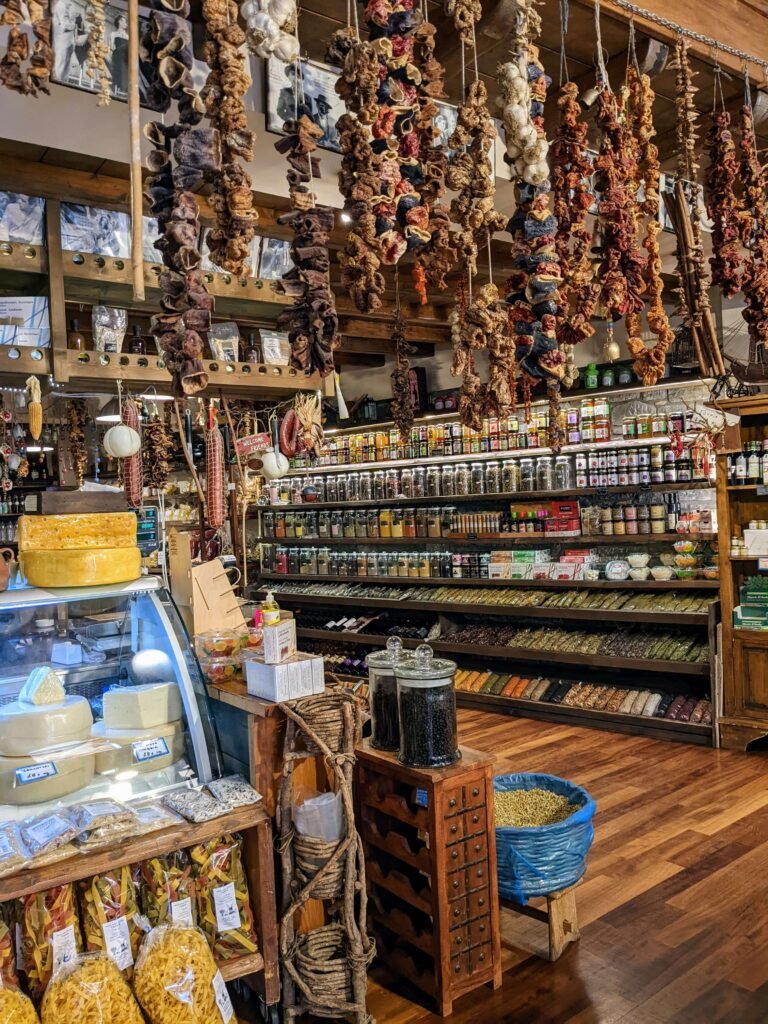
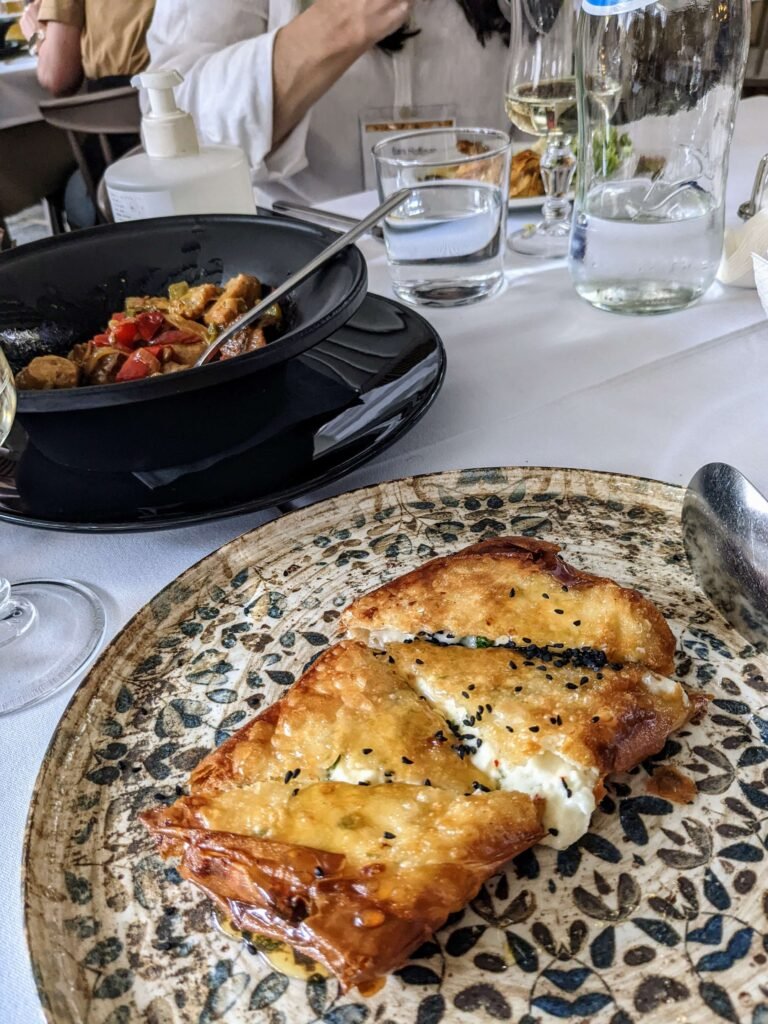
Where to stay in Vytina
There are lots of lovely accommodation options in the centre of Vytina.
Click here to see options on Booking.com.
Click here to see options on Expedia.
8. Kalamata
You might have heard of Kalamata olives, but did you know that Kalamata is also a bustling city with a golden sandy coastline, an abundance of bars and restaurants, and lots of things to see and do?
Kalamata is the second largest city in the Peloponnese, but it feels more like a relaxed beach town, and is definitely worth a stop on your Peloponnese itinerary (there’s also an international airport here, which is handy!).
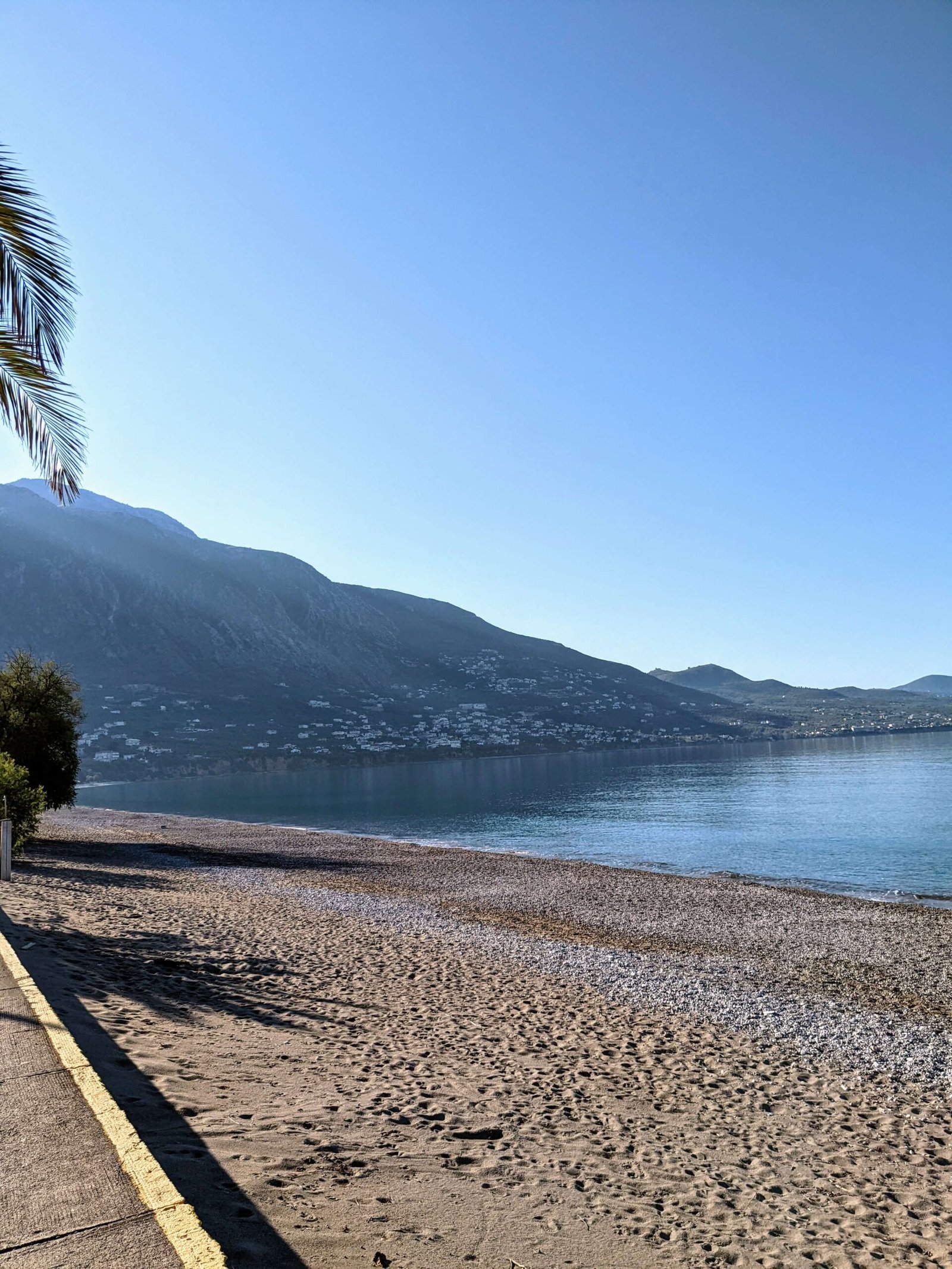
Kalamata isn’t where you’ll find the best beaches in the Peloponnese, but it’s definitely the most convenient place to get to with the most accommodation options.
It is surrounded by olive groves (I highly recommend The Olive Routes tour and oil tasting), family wineries, and stunning little villages just crying out to be explored.
For more information, you can check out my full guide to Kalamata.
Where to stay in Kalamata
There are tonnes of great hotels in Kalamata.
I stayed at the 4-star Elite City Resort, right on the beach. There were lots of lovely bars and restaurants close by, and I could get into the city centre easily by bus or taxi.
The hotel itself was amazing, with a fantastic breakfast, large room with a big balcony, and all the amenities you could wish for.
9. Gerolimenas
The tiny harbour of Gerolimenas is about as off the beaten path in Greece as you can get!
With a picturesque pebble beach, a handful of tavernas serving up the catch of the day, and a couple of stunning boutique hotels, Gerolimenas is well worth spending the night.
Gerolimenas used to be one of the most remote areas of Peloponnese, and until the 70s, it could only be reached by boat!
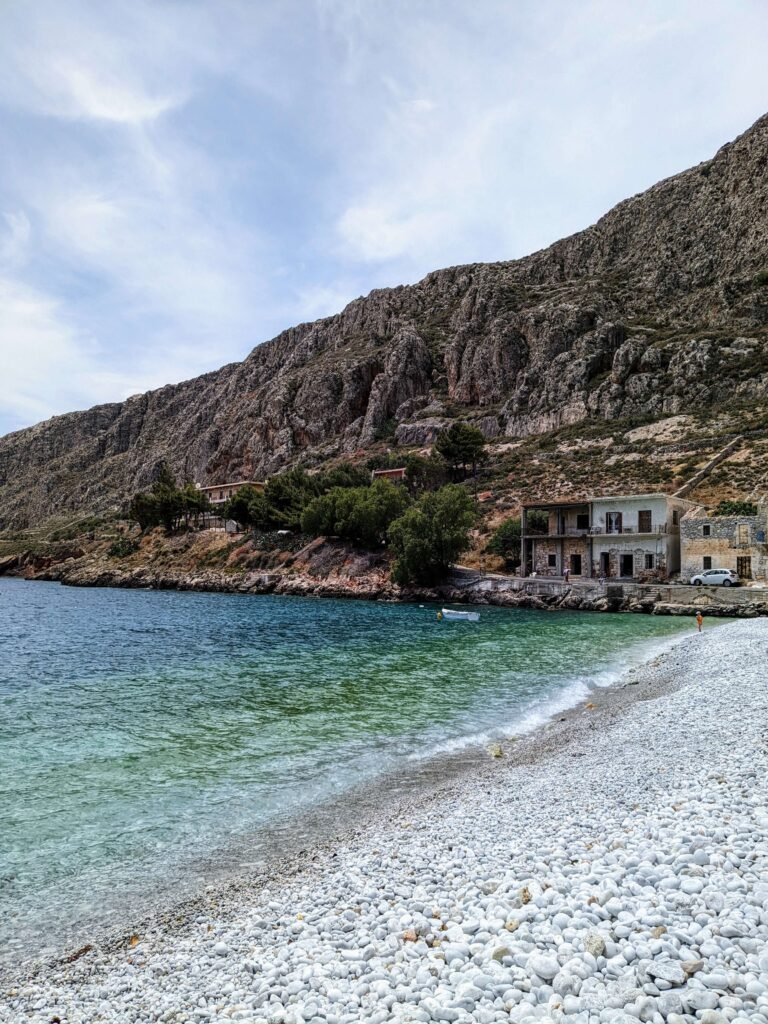
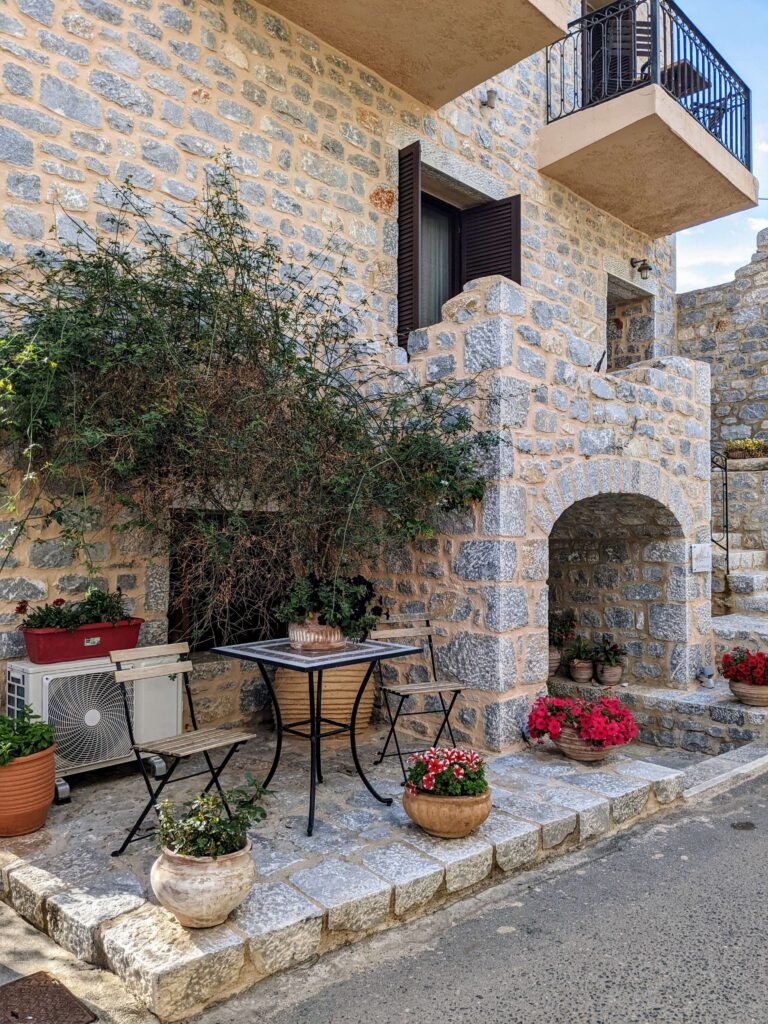
Where to stay in Gerolimenas
There are 2 main hotels in Gerolimenas, the one that I stayed at, and a luxury hotel at the end of the village.
I stayed at Akrotainaritis, a cosy boutique hotel with wooden beams and floors, stone walls, and gorgeous sea views. I absolutely adored this place, and their onsite restaurant served up a really tasty lunch for us. It’s a great mid-range option.
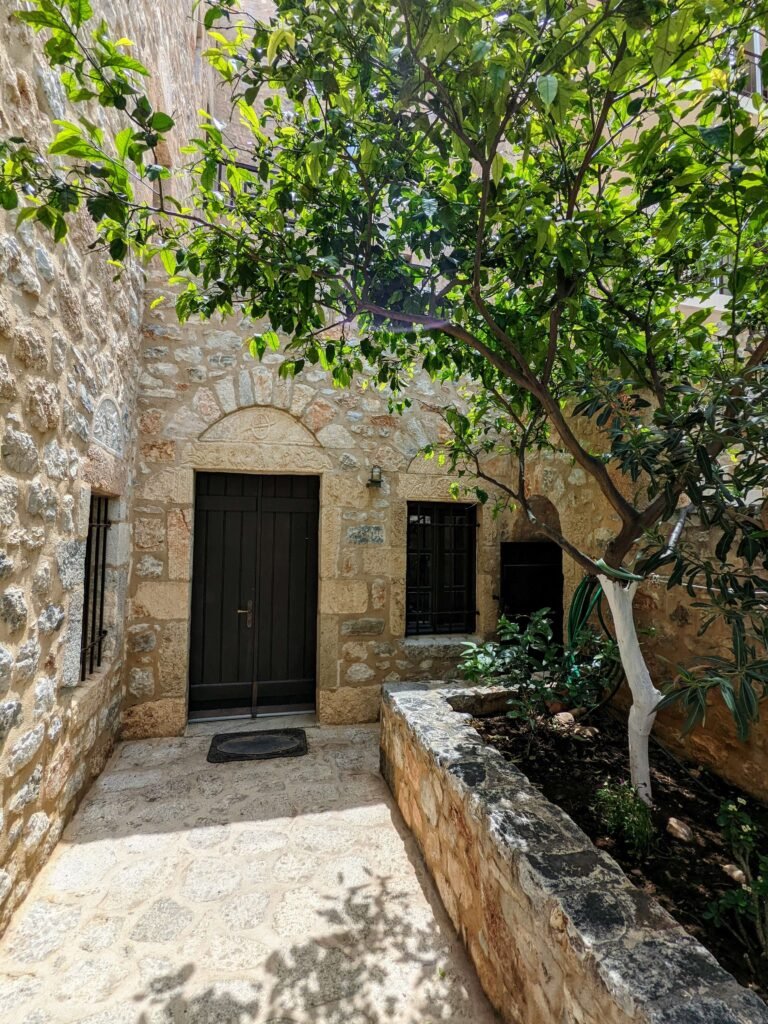

A more luxe option is Kyrimai Hotel, with absolutely stunning country-chic rooms with antique furniture and its very own private beach.
10. Kardamyli
Kadramyli is without a doubt one of the most beautiful places in the Peloponnese, as well as the cultural capital of Mani.
Places to visit in Kardamyli include the Byzantine Church of Eisodia, the ruins of Mourtzinos Castle and the church of Saint Spyridon.
However, the greatest pleasure here is to simply wander through the quaint old town, taking in its whitewashed houses, sleepy atmosphere, and sea views.
Fun fact: Homer wrote of Kardamyli in the Iliad, bearing witness to the city’s millennia-old past!


Where to stay in Kardamyli
I didn’t spend the night in Kardamyli, but there are certainly lots of great options if you decide to.
11. Nafplio
Nafplio is one of the most popular places to visit in the Peloponnese region.
It’s a picturesque coastal town that was actually the first Greek capital after Greece was liberated in 1821 – unfortunately, after just 4 years, its status as capital was transferred to Athens by the King.
However, that didn’t stop the town from flourishing, and over the years, artists, merchants, and couples looking for romantic getaways have all flocked to Nafplio.
Nafplio’s crown jewel is the 400-year-old Palamidi Fortress, which sits perched atop a hill, offering panoramic views of the surrounding azure sea and the rooftops of Nafplio.
Bourtzi Fortress and Akronafplia Fortress are the other two fortresses protecting the city, and after you’ve finished your historical explorations (not forgetting the archaeological museum), enjoy the sweeping ocean views, quaint cafes, and stunning architecture.
Where to stay in Nafplio
Nafplio is one of the most popular places to visit in the Peloponnese, and as a result, it certainly isn’t short of holiday apartments and boutique hotels!
12. Mezapos
When it comes to Greece off the beaten path, Mezapos is a true jewel.
This tiny fishing port and settlement has just a dozen or so residents, and is one of the most remote places in Greece.
In years gone by, Mezapos was known for the famous pirate, Nikolos Sassaris, who lived in the village and was active during the second half of the 18th century.
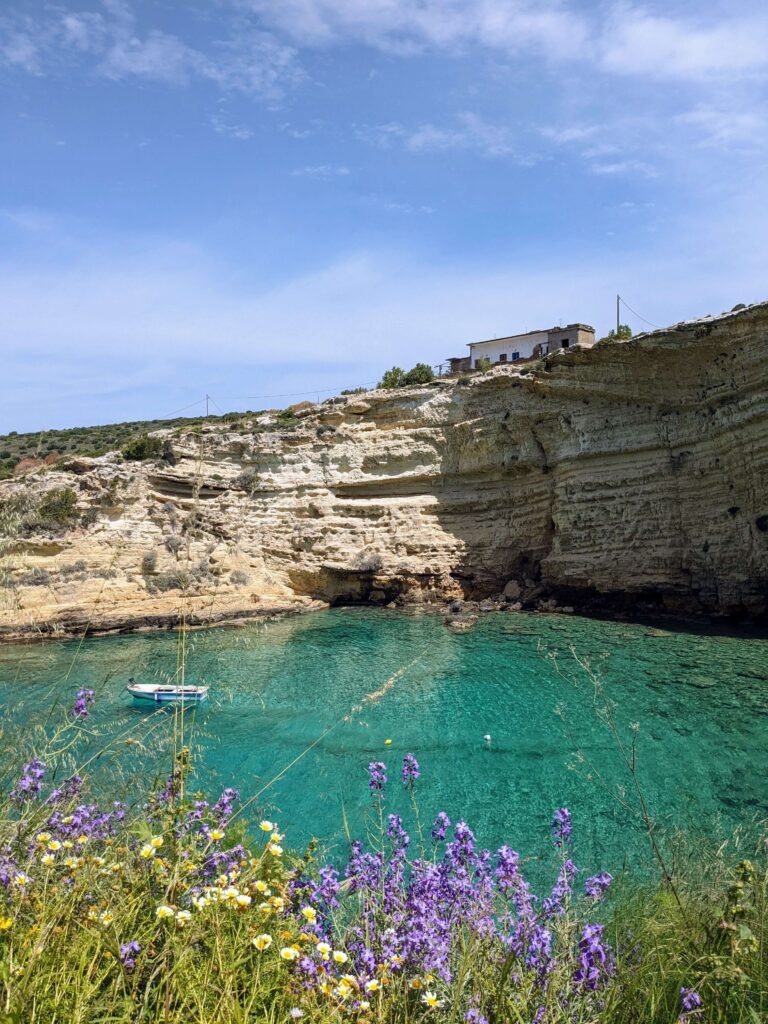
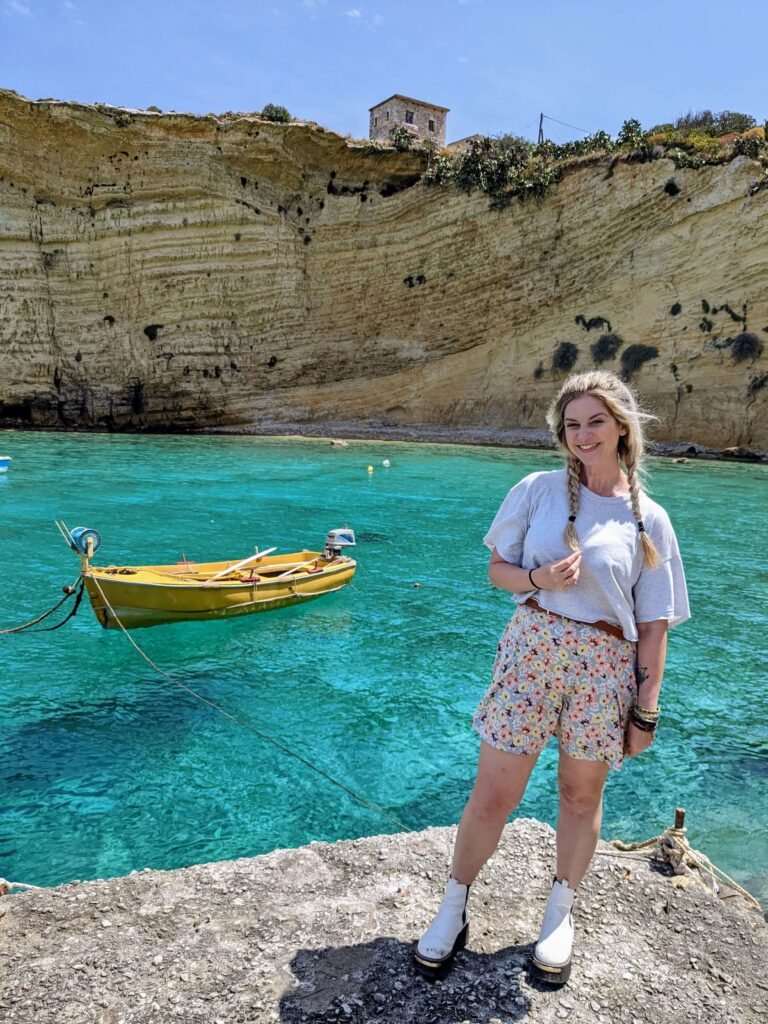
Known as the ‘one-eyed pirate,’ Sassaris died at the hands of Turkish ships when returning to Mani with a French ship as booty.
Today, you can scramble down the rocks to the secluded beach (definitely one of the best beaches in the Peloponnese, if you like unspoilt nature) and relax as you watch the fishermen at work.
There are also 2 sea caves here which can be explored by swimming, and legend has it that the one-eyed pirate’s treasure is still hidden in one of them!
13. Tainaro
Ever wanted to go to the ends of the earth?
Even more remote than Mezapos is Cape Matapan (or Tenaro, or Tainaro, depending on who you ask).
This is the southernmost point of mainland Greece within the Peloponnese region, and Greek legends say that this was the home of Hades – spooky!
To get here, drive to Kokkinogia village, where you can park your car. There is a lovely taverna here if anybody from your group does not wish to hike.
From here, you’ll have to continue on foot for about 45-60 minutes, on rocky terrain. You’ll pass the temple in honour of the Gates of Hades, as well as some Roman baths, before coming to a large stone lighthouse.
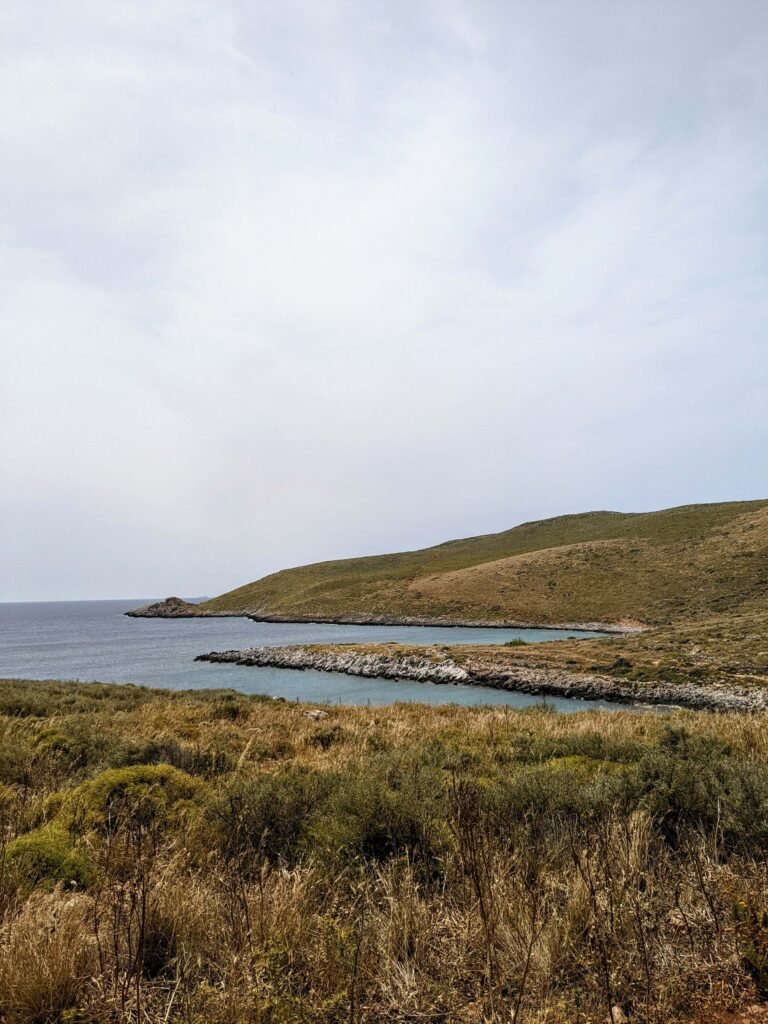
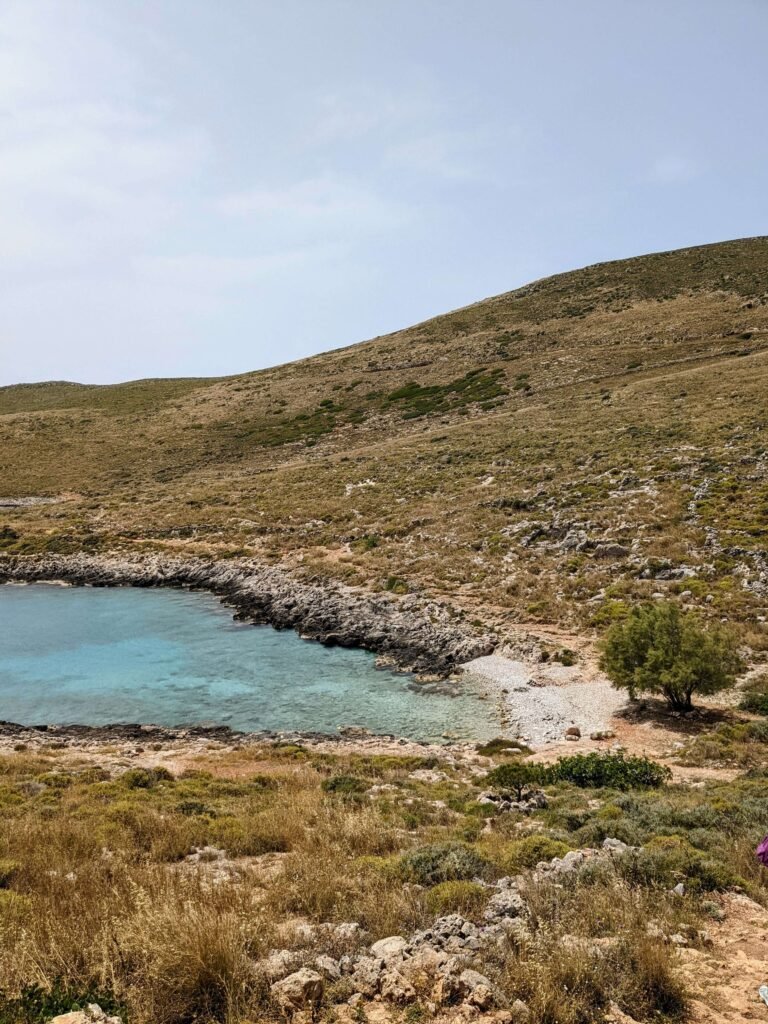
I decided to skip the hike as I didn’t have the correct shoes, but my group told me that it is a fairly tough walk with quite a bit of scrambling up steep rock, and really rocky terrain.
The walk itself isn’t steep at any point, but several experienced hikers in our group said that they felt it was a mid-to-difficult walk rather than the ‘mild’ hike that is often described online.
It also gets very windy here so be sure to bring plenty of sunscreen, water, and appropriate footwear.
14. Porto Kagio
Porto Kagio is another incredibly remote seaside village in the South of Mani, where the only things to do are soak up the sun, eat fresh seafood, and swim in the crystal clear waters.
In my opinion, this is one of the best beaches in the Peloponnese region.


Where to stay in Porto Kagio
There are a handful of accommodation options in Porto Kagio, but the one that I recommend is Akrotiri B&B, which is where we had lunch.
Not only was the food amazing, but it was perched right on the beach, and judging from the photos online, the rooms are pretty great too.
15. Vathia
Located on the South-eastern part of the Mani peninsula, Vathia is one of the most unique places to visit in the Peloponnese region, and one of the most fascinating places I’ve ever been.
Perched on a hilltop overlooking the dramatic coastline, Vathia is renowned for its iconic stone tower houses that dot the landscape, creating a striking and picturesque scene. These towers, known as pyrgospita, were once the fortified homes of local families, built as defensive structures during times of conflict.


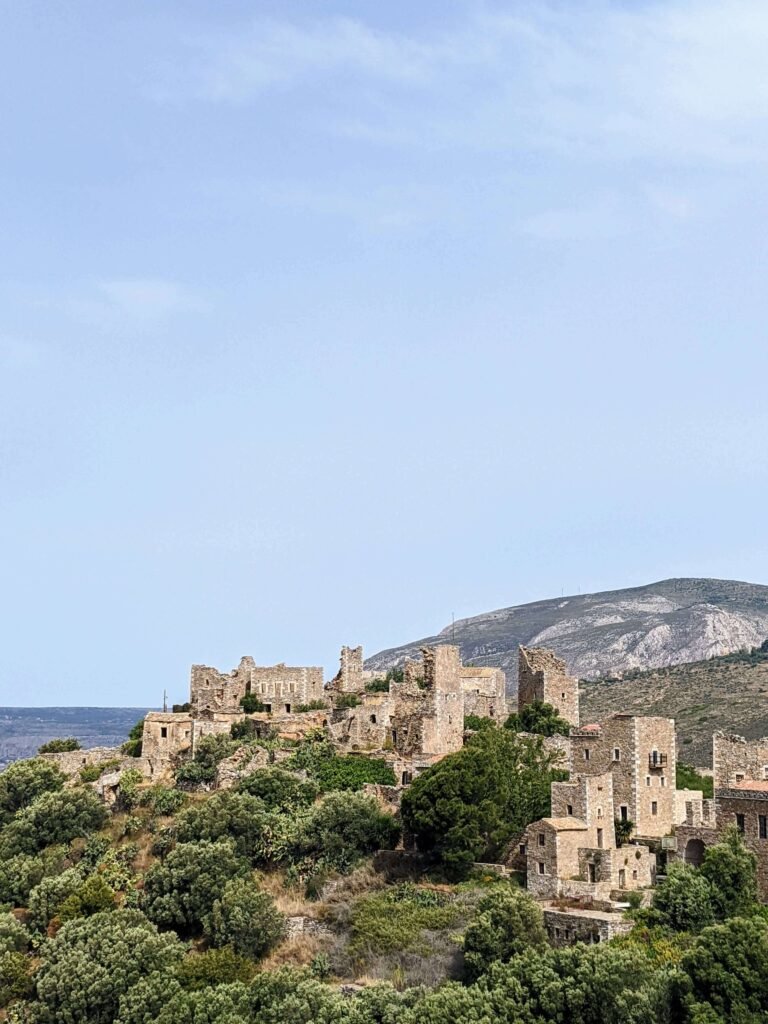
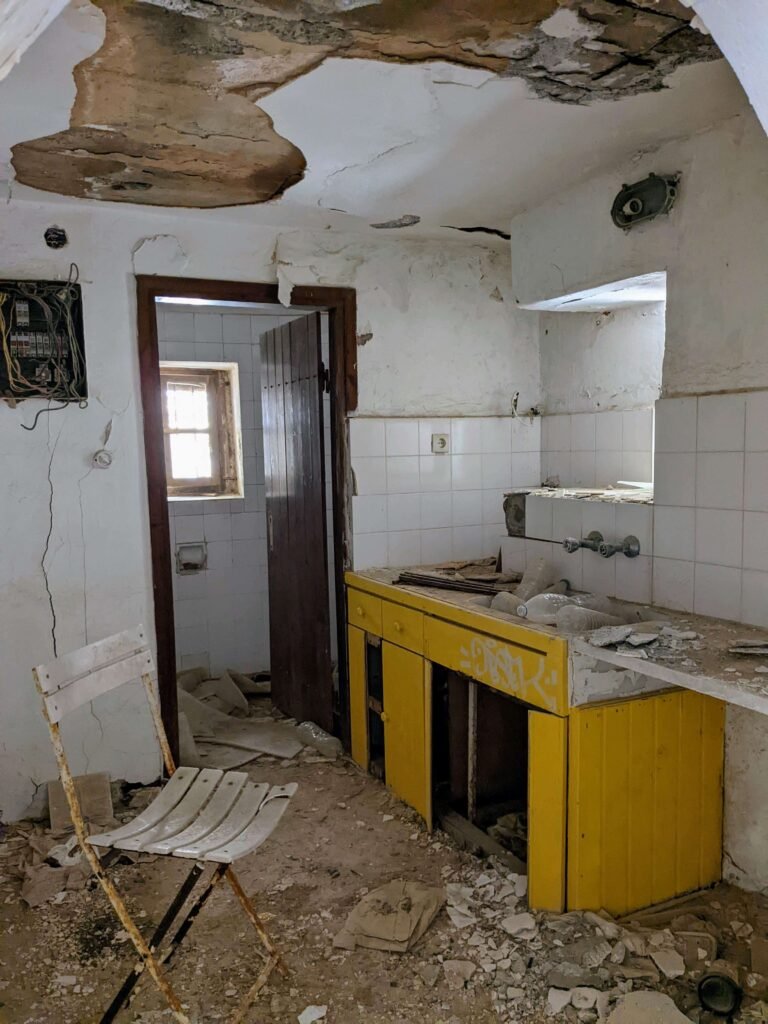
Today, almost the entire village has been abandoned, and you can actually walk right into the old houses and see furniture, old newspapers, and other remnants of years gone by.
Wandering through the village is one of the most unique travel experiences I’ve had – I’ve explored my fair share of abandoned buildings before, but never an entire village!
The panoramic views of the surrounding rugged landscapes and the sparkling waters of the Mediterranean Sea only add to the village’s allure, and while some of the pathways are narrow and overgrown, Vathia is still an incredible place to explore.
Most Beautiful Places in the Peloponnese | Final Thoughts
When it comes to hidden gems in Greece, the Peloponnese has them in droves.
From isolated beaches and rugged landscapes to deserted villages and ancient ruins, the Peloponnese region, and the Mani Peninsula, is full of places undiscovered by mass tourism.
In the Peloponnese, you will find an authentic Greece, away from the inflated prices and tourist traps of Mykonos and Santorini.
If you don’t drive or simply want the stress of planning taken away, why not check out this 5-day tour of the best of the Peloponnese? It’s pretty much the same one that I took, and I had a phenomenal time.
That’s it for today, but as always, if you have any questions, don’t hesitate to reach out and ask me in the comments section below and I’ll be happy to answer!
Until next time,
XOXO
If you liked this article and would like to support my work, please click the button above to donate a couple of bucks and buy me a coffee. The ad revenue that I receive on this website is minimal, so support from my readers enables me to keep creating content that you (hopefully!) love to read.

